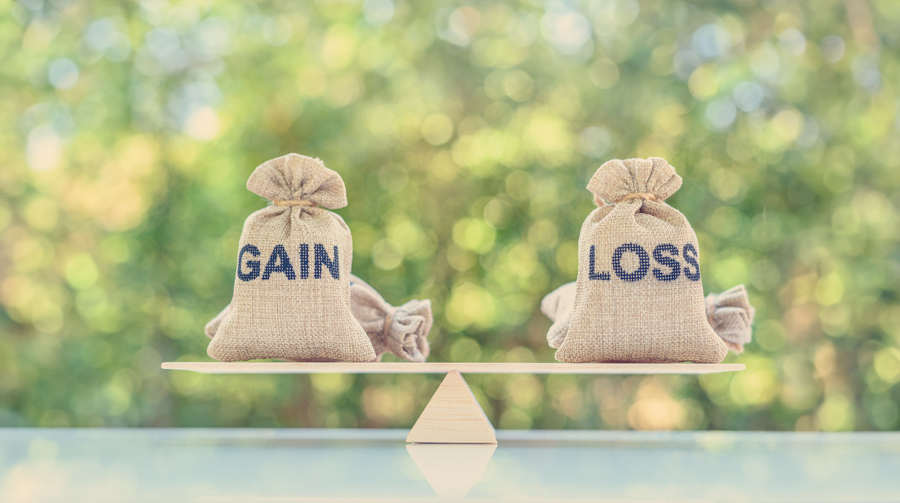
This article is for general guidance only and is not financial or professional advice. Any links are for your own information, and do not constitute any form of recommendation by Saga. You should not solely rely on this information to make any decisions, and consider seeking independent professional advice. All figures and information in this article are correct at the time of publishing, but laws, entitlements, tax treatments and allowances may change in the future.
You’ve probably heard of the 25% tax-free cash that you can take out of your personal pension. It’s one of the most popular features of saving for retirement.
Savers are allowed to withdraw a quarter of their nest egg from age 55 – rising to age 57 from April 2028. But the tax treatment of pension lump sums isn’t as simple as it sounds, so there’s plenty to think about first – especially if you’re still working and paying into your pot.
There are two ways to take a lump sum from your pension. Both allow you to take 25% tax-free, but the taxation of the withdrawals is different. Understanding the difference can spare you a significant tax bill.
To take your tax-free cash as a lump sum, you will first need to make some decisions about how you will use your pot to generate your retirement income. When you either use your pot to set up a drawdown plan (where your pension remains invested and you make withdrawals as and when required) or buy an annuity (an insurance product that pays a guaranteed income) you will have the opportunity to take 25% as a tax-free lump sum.
Say, for example, your pot is worth £100,000. You could take £25,000 as your tax-free cash, but any income from the remainder (whether that’s delivered by an annuity or a drawdown plan) would be subject to income tax. It’s also important to note that if you go into drawdown, you don’t have to start taking a regular income from the rest of your pot straight away.
You can take your tax-free cash and leave the rest invested until you need it. If you use drawdown, you will still be able to take further lump sums out of your pension once you have taken your tax-free cash, but they will be taxed as income.
It is possible to take lump sums out of your pension without making any decisions about what you will do with the rest of your pot. These go by the not-very-catchy name of uncrystallised funds pension lump sums.
The big drawback is that if you do this, you can’t take your 25% tax-free cash as a one-off lump sum. Instead only the first 25% of your withdrawal is paid tax free, and the remaining 75% is added to your income for the year and taxed at your highest rate of income tax. Depending on the size of your withdrawal, this could land you with a hefty tax bill and potentially be enough to push you into a higher rate tax bracket. On the other hand, if you carefully plan the timing and size of your withdrawals, it could support you with your lifestyle choices (such as a phased retirement) and you may be able to avoid moving into a higher tax bracket.
In general UFPLS is not usually seen as a long-term and well-planned way of accessing your pension, in comparison to drawdown and annuities. But for some it has become part of a "pick and mix" approach since pensions freedoms were introduced in 2015. You can still buy an annuity or move into drawdown after making UFPLS withdrawal.
You are allowed to take money from your pension as soon as you hit age 55 (or 57 from 2028), regardless of when you actually plan to retire. However, if you’re still working, weigh up whether it makes sense to dip into your pension before you retire.
Andrew King, retirement planning specialist at the wealth manager Evelyn Partners, says that if the pension money is used to reduce debt, this could be a sensible option. “Many savers will take this option, repay their mortgage and then redirect the money they were paying in mortgage payments back into their pension to replenish the fund.”
Alternatively, you may have some expenses that you want to cover now, such as home improvements, a new boiler, or a big holiday, which a pension withdrawal could help with. Or you might want to help a child or grandchild with costs of university or buying a home.
King adds that with pensions due to be liable for inheritance tax from April 2027, wealthier individuals may want to consider taking money out and giving it to loved ones. He explains: “Many savers who had previously decided to leave their pensions to their children might consider taking a lump sum now and gifting that money to their children, hoping they will survive for the next seven years, meaning the gift will be outside of an individual’s estate for inheritance tax purposes.”
However, the main disadvantage of taking a lump sum out of your pension before you retire is that you will have less money later on.
Rachel Vahey, head of public policy at the investment platform AJ Bell, comments: “Withdrawing your tax-free cash now means you could miss out on valuable investment growth in the years up to your retirement. So, it’s always worth doing the sums to work out if you can afford to take a pension lump sum early.”
If you take your 25% tax free cash at 55, you will likely get a smaller lump sum than you would if you held off until you were 65, for example. If you plan to make an UFPLS withdrawal, you also need to consider the amount of tax you will pay on your withdrawal. It may be more tax-effective to take money from another source, like an ISA if you have one, where tax won’t be payable.

If you opt to take a lump sum from your pension while you’re still working, you also need to watch out for the Money Purchase Annual Allowance (MPAA).
Most savers are allowed to contribute up to £60,000 to their pensions each tax year, thanks to the annual allowance. This includes employer contributions and tax relief.
But as soon as you withdraw any money that is liable for tax, your annual allowance is replaced by the MPAA. This cuts the maximum contribution to just £10,000. King notes: “This reduction could be critical for high earners who are still working and receiving employer pension contributions.”
The MPAA is triggered when you take your first UFPLS withdrawal, when you withdraw money from a drawdown account, or if you take your entire pension pot as a lump sum. It is not triggered if you only withdraw a tax-free cash lump sum, or you buy a lifetime annuity.
There’s also an exemption for small pensions, which can come in handy, if you are still saving for retirement. If you’ve got a pot worth £10,000 or less, you can cash in the whole lot and take it as a single lump sum without triggering the MPAA. Under small pot rules, up to three pots worth up to £10,000 each can be taken as a lump sum in your lifetime. The first 25% of each is paid tax-free and the remainder is taxed as income.
Before you take any money out of your pension, you need to prepare for emergency tax. Every year, thousands of people are hit with emergency tax when they withdraw ad-hoc lump sums from their pensions.
The problem can affect anyone who makes a taxable withdrawal. If HMRC does not have the correct tax code, an emergency code is used, which assumes the pension saver takes the same lump sum every month for the rest of the tax year.
For example, Vahey says that a pension saver who has no other income and takes £50,000 from their pension pot – £12,500 as a tax-free lump sum and £37,500 as taxed income – would have to pay around £15,250 in emergency tax, whereas the actual tax due is only around £5,000.
You can claim the overpayment back, either by completing a form from HMRC or submitting a self-assessment tax return.
Taking a lump sum out of your pension can sometimes land you with a hefty tax bill, but there are ways to limit that. Making smaller pension withdrawals and/or going into drawdown in stages can reduce the amount of tax you pay, for example.
According to King, “a series of lump sum withdrawals for a non-taxpayer or basic-rate taxpayer could be very efficient, especially if the state pension has not started yet, which usually uses up the personal allowance”.
He adds: “Some individuals will also take their maximum tax-free lump sum and live off this for the first few years of retirement.”
Vahey says you could take a slice of your pension where 25% is tax-free and the other 75% is taxed as income. “For example, if you take £16,760 from your pension, £4,190 (25%) will be tax-free, and £12,570 will be taxed as income, but as this is the same as the tax-free personal allowance, no tax may be due. Taking money in stages like this may be a very tax-efficient way of providing yourself with an income and managing your tax bills.”
There are many ways to structure your retirement income more tax-effectively – especially if you have income from a number of sources – and it can be complicated. It may be worth consulting a financial planner who can make recommendations based on your personal circumstances.
If you are over 50 you can also get free guidance on your options from Pension Wise, though this won’t include personal recommendations.



From toys to board games to prepaid cards, we've researched the top options.

Find out what changes to the rates and allowances for capital gains tax could mean for you

Find out which tools and guides that can help you complete your tax return.